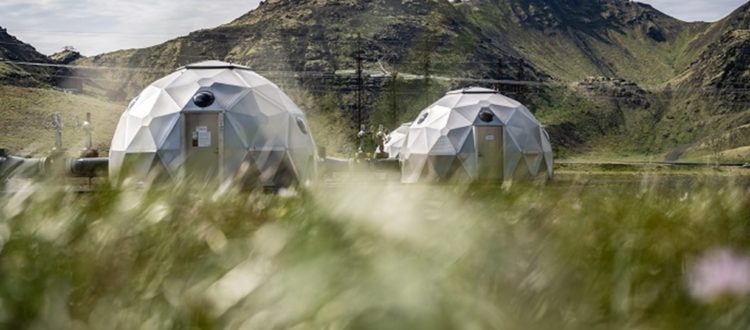COP26: NEUTRALISING RESIDUAL EMISSIONS
The 2015 Paris Agreement binds the 196 signatory countries to keep the average global temperature well below 2°C, with the ambition not to exceed 1.5°C. The path to the 1.5°C target, however, is not easy: it requires to halve greenhouse gas (GHG) emissions (compared to 2010) by 2030 and to reach “Net zero” by 2050.
Unfortunately, for technical and economic reasons, a minority of GHG emissions will inevitably still be present by 2050, produced by “hard to abate” sectors such as agriculture, steel industry or aviation. To achieve “Net zero” emissions, it will be necessary to balance the remaining emissions with “negative” emissions, through the removal of CO2 already present in the atmosphere, thanks to techniques called “Carbon Dioxide Removal” or CDR.
Some techniques that remove CO2 from the atmosphere consist of increasing the capacity of existing natural processes to absorb carbon from the atmosphere mainly through photosynthesis (these natural processes are called carbon sinks). For example, the restoration of degraded ecosystems, forests, planting trees on an industrial scale. These are sometimes referred to as “nature-based solutions“, even if it is questionable to consider “natural” a plantation extended over a territory previously unforested.
There are then more technological processes, which consist of capturing CO2 directly from the air, a process called DAC (Direct Air Capture); BECCS technology consists of coupling bioenergy with CCS, i.e. having plants absorb CO2 and then capturing it in the flue gas of a biomass power plant. Finally, there are other techniques such as enhanced weathering (the acceleration of carbon dissolution through reaction with carbonate rocks) or techniques involving the oceans, such as ocean alkalinization.

These techniques, with the exception of ecosystem restoration and forestry, are still at an early stage of development: to date, indeed, there are no large-scale DAC or BECCS plants and the few experimental projects are still very energy-intensive and expensive.
According to what was presented during the Side Event of COP26 “Policy, business, and social challenges for carbon dioxide removals and carbon capture & storage”, organized by the European Union, it is therefore necessary to put in place regulatory and normative interventions to ensure that these technologies reach before 2050 the degree of maturity required to neutralize the mentioned residual emissions.
According to Milan Elkerbout, researcher at the European think-tank CEPS, the main obstacles to the large-scale development of CDR technologies are represented by costs and market uncertainties. The costs of carbon removal is over 100€ per ton of CO2 removed (transport and storage costs are to be added), while the current price of emission allowances in Europe is about 60€ per ton.
Other obstacles are related to legislation: regarding CO2 removal techniques that involve the oceans “ocean-based CO2 removal” (for example ocean alkalization), according to David Keller, Senior Scientist at GEOMAR Helmholtz Centre for Ocean Research, the regulations on what is possible and what is not possible to implement from area to area are not at all clear. The situation is even worse if you go far from the coast, in the open sea: a “global common” and therefore not subject to the legislation of a single State.
As far as CCS is concerned, i.e. the capture of CO2 from the flue gas of a point source, such as a coal-fired power plant, investments are held back by the presence of viable alternatives to carbon capture – notably renewables. This reluctance is exacerbated by the inherent uncertainty associated with the absence of a clear official quantification of the CCS that will be required.
The proposed solutions, in addition to the adaptation and homogenization of the legislation on ocean-based and land-based CDR techniques, are aimed precisely at reducing uncertainty and costs: establish specific European targets for CDR, parallel to the emission reduction targets; create an ad hoc category within the EU Taxonomy for sustainable activities; allocate government funding and incentives for CDR based on the Emission Trading System.
To encourage the adoption of CO2 capture and storage (CCS) techniques in hard-to-abate sectors that do not have an alternative in renewables, such as the cement and steel sector, a “carbon contract for differences” is being discussed: this would essentially consist of a subsidy equal to the difference between the price of CCS per ton of CO2 absorbed and the price of the same ton on the ETS market. The higher the value of the emission allowances, the lower the subsidy paid. However, this is a controversial mechanism due to the distortions it could create in the ETS market.
Finally, particular attention should be paid to fostering cooperation between States, so as to minimize limitations in storage options and so as to create international standards covering the quality of CO2 captured by different processes (for example, the gas captured from a power generation plant is not identical to that from steel production).
Elisa Terenghi, Volunteer ICN for COP26
You are reading this ICN COP Bulletin article as part of the EC DEAR SPARK project. Marirosa Iannelli, Coordinator of the Climate & Advocacy Department of ICN, overviews this activity. ICN monitors negotiations and reports what is happening in Italian and English, on our website and on social channels, as part of a pan-European consortium of over 20 non-profit organizations committed to promoting climate awareness with particular attention to the role of young people and issues related to international cooperation and gender policies.


